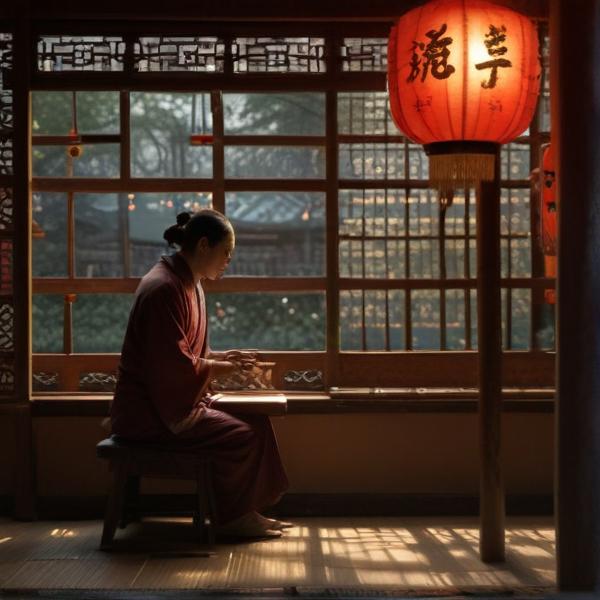基本信息 (Basic Information)
含义与用法 (Meanings & Usage)
中文核心释义 (Core Chinese Meaning): 完结,结束;全部;姓氏
英文核心释义 (Core English Meaning): to finish, to complete; all, entire; a surname
象形意义 / 为何这么写 (Pictographic Meaning / Writing Rationale)
文言文释义 (Classical Chinese Meaning)
与现代意义相近,常指结束、完结,也作‘全部’解。Similar to modern meaning, often indicating to finish, to end, or 'all/entire.'
深入学习 (In-depth Study)
字源故事 (Origin Story)
字形演变 (Character Evolution)
常用词语和例句 (Common Words & Examples)
毕业 (to graduate)
他今年夏天就要毕业了。
Eng: He will graduate this summer.
毕竟 (after all)
她毕竟还是个孩子。
Eng: After all, she's still a child.
毕生 (one's whole life)
他毕生都在研究这个问题。
Eng: He has spent his whole life researching this problem.
毕力 (with all one's strength)
大家毕力完成了任务。
Eng: Everyone completed the task with all their strength.
相关成语 (Related Idioms)
相关成语信息待补充。Related idiom information pending.
多语言翻译 (核心释义) (Translations (Core Meaning))
- French: finir, achever, tout, complet
- German: beenden, abschließen, ganz, vollständig
- Spanish: terminar, completar, todo, entero
- Italian: finire, completare, tutto, intero
- Portuguese: terminar, completar, tudo, inteiro
- Russian: закончить, завершить, всё, полный
- Arabic: ينهي، يكمل، الكل، كامل
- Persian: تمام کردن، کامل کردن، همه، کامل
- Dutch: voltooien, afronden, alles, volledig
- Polish: skończyć, ukończyć, wszystko, cały
- Vietnamese: kết thúc, hoàn thành, tất cả, toàn bộ
- Ukrainian: закінчити, завершити, все, повний
视频学习资源 (Video Learning Resources)
通过以下链接在热门视频网站搜索 "毕" 的更多讲解:
Search for more explanations of "毕" on popular video sites:
- 在 Bilibili.com 搜索 "毕 字源 说文解字" (Search on Bilibili)
- 在 YouTube.com 搜索 "毕 character origin etymology" (Search on YouTube)
网络参考 (Web References for "毕") ()
网络内容摘要 (Web Content Summary):
毕(拼音:bì)是常用汉字,起源于商代甲骨文。其古字形像捕鸟用的长柄网,后来引申为“完结、结束”的意思,如“完毕”。再进一步,可以表示“完全、一生”,如“毕生”。 Bi (pinyin: bì) is a commonly used Chinese character that first appeared in Shang dynasty oracle bone script. Its ancient form resembles a long-handled net used for hunting birds, which led to the meaning of "to finish" or "conclude," as in “完毕” (to complete). It further extended to mean "entire" or "whole life," as in “毕生” (one’s whole life).
- 有趣的是,“毕”也是中国二十八宿之一(古代星宿名)。 Interestingly, "毕" is also the name of one of the twenty-eight lunar mansions (ancient Chinese star groups).
- 常见搭配有:完毕(完成、结束),毕生(一生,全部生命)。 Common words include: 完毕 (to finish, complete), 毕生 (one's entire life).
- 易混淆点:与“必”(一定)、“笔”(writing instrument)字形和发音类似,但意义不同。 Easily confused with: “必” (certainly) and “笔” (pen), which look or sound similar but have different meanings.
整体而言,“毕”体现了从实物(捕网)到抽象(结束)的字义演变过程。 Overall, "毕" exemplifies how Chinese characters evolved from physical objects (a net) to abstract concepts (ending or completion).
(如需更深信息,原材料提供有限。) (Further details are limited by the extracted source material.)
毕(汉语文字)_百度百科
毕(拼音:bì)为汉语一级通用规范汉字(常用字)。此字始见于商代甲骨文,其古字形像田猎用的长柄网。由鸟被捕捉后,假借指完结、终了、结束,如:完毕;又由"完结"引中指完全,如:毕生。"毕"也是二十八宿之一。
汉字"毕"的起源与演变(源流)-汉字字源网
汉字字源网收录2975个汉字的源流词条,基本涵盖了常用汉字的字源分析,是学习和研究汉字的必备工具。 网站首页 词典首页. 请输入您要查询的汉字: 汉字: 毕: 字源: 毕.
更多图片 (毕 More Images) ()
